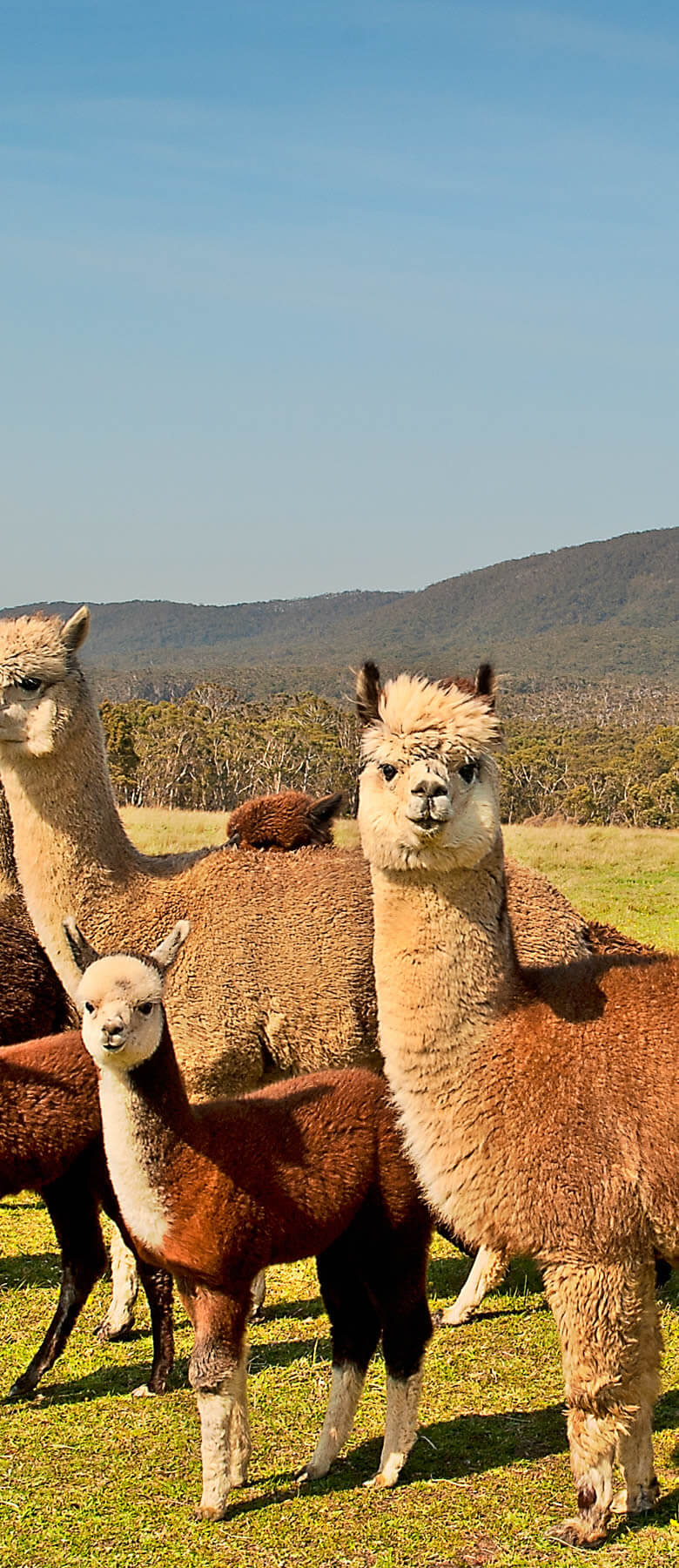AAA Animal welfare statement
Australian alpaca producers depend for their livelihood on the good health and welfare of their animals. Producers recognise that animal health and animal welfare go hand in hand and, because of their regular interaction with their animals, are best equipped to monitor the wellbeing of their animals within their care and to summon veterinary input when needed.
AAA Statement
Animal welfare is a key priority for the Australian Alpaca Association (AAA), and as the peak national body for the alpaca industry in Australia, we believe that the industry will benefit from a united approach to animal welfare. Individuals involved in the alpaca industry and its supply chains must take a proactive approach to ensure that a positive welfare state is achieved for each animal in their care. AAA encourages industry stakeholders to adopt this statement as their own.
Our position
Welfare is a broad term that is not easily defined, but it is a state that exists within every animal and therefore must incorporate the physical and mental well-being of the animal.
Animal welfare is a responsibility that encompasses all aspects of animal wellbeing. This includes, but is not limited to adequate housing, management, nutrition, humane handling,
and veterinary treatment. An animal is in a positive state of welfare when it is healthy, comfortable, well nourished, safe, and able to express natural behaviours, indicated by science-based evidence. Good husbandry and veterinary practices and sufficient availability of resources enable a positive welfare status to be achieved. All husbandry activities should be conducted to the highest possible welfare standards, and only be conducted when the lifelong benefit to the animal outweighs any short-term adverse welfare impacts.
It is the responsibility of every person involved in Australia’s alpaca industry to achieve high animal welfare.
AAA adopts the Five Domains of Animal Welfare Model. The model provides a foundation to guide welfare management objectives that achieve a positive welfare state for each individual animal. We support unbiased scientific, evidence-based approaches to determine clearly defined and measurable welfare states.
The AAA endorse the Australian Veterinary Association’s Australian Alpaca Veterinarians Code of Welfare for Alpacas and Llamas Australia, 2016 as the guidelines for Australian alpaca welfare.
Our commitment
AAA demonstrates our ongoing commitment to the positive welfare states of animals in the alpaca industry through our policy and advocacy efforts.
Alpaca Castration Policy
Castration is performed in alpacas to reduce undesirable behaviour such as aggression and mounting behaviour and make males safer to handle.
- Castration is performed in a hygienic and competent manner with the use of pain relief in all cases; by a veterinarian in certain jurisdictions according to legislation.
- Rubber rings (such as Elastrator®) must never be used to castrate camelids as their scrotal anatomy is unsuitable.
- Cryptorchid males must have both testes removed during the same procedure to ensure hemi castrated males are not created.
- Alpaca males sold with no intention of use within a breeding program must be castrated prior to sale. This includes for the purposes of fleece production, companion animals, guardians and/or herd protection
Pain Relief Policy
Farming alpacas can involve elective husbandry procedures including castration, dentistry and some artificial reproduction techniques which have been identified as potentially causing pain and distress. The AAA promotes the use of appropriate and effective analgesia during all potentially painful livestock husbandry procedures.


